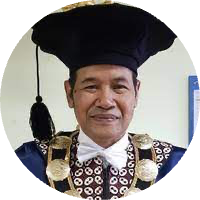LINKING MATHEMATICS AND CULTURAL PRACTICES OF THE AGTA TABANGNON IN THE UPLAND COMMUNITIES OF GOA, PHILIPPINES
DOI:
https://doi.org/10.21831/ej.v4i2.63235Abstract
References
Avengoza-Almadrones, R. J. (2015). The Bihug's construction of the concept of nation. Asia Pacific Journal of Multidisciplinary Research, Vol. 3 No.5, 171-178. http://www.apjmr.com/wp-content/uploads/2015/12/APJMR-2015-3.5.1.20.pdf
Cimen, O. A. (2014). Discussing ethnomathematics: is mathematics culturally dependent? Procedia-Social and Behavioral Science, Volume 152, 523-528. https://doi.org/10.1016/j.sbspro.2014.09.215
d'Ambrosio, U. (2001). What is ethnomathematics, and how can it help children in schools? Teaching Children Mathematics, v7 n6 p308-10. https://doi.org/10.5951/TCM.7.6.0308
Hariastuti, R., Budiarto, M, and Manuharawati, M. (2019). From culture to classroom: study ethnomathematics in house of using banyuwangi. International Journal of Trends in Mathematics Education Research, Vol. 2, No. 2, pp. 76-80. https://doi.org/10.33122/ijtmer.v2i2.60
Nur, A.,S., Waluya, S.,B., Rochmad, R., & Wardono, W. (2020). Contextual learning with ethnomathematics in enhancing the problem solving based on thinking levels. JRAMathEdu (Journal of Research and Advances in Mathematics Education). https://doi.org/10.23917/jramathedu.v5i3.11679
Pradhan, J., Sharma, T. & Sharma, T. (2021). Ethnomathematics research practices and its pedagogical implications: a Nepalese perspective. Journal of Mathematics and Culture. https://journalofmathematicsandculture.files.wordpress.com/2021/05/article_6.pdf
Retnowati, E. & Marissa (2018). Designing worked examples for learning tangent lines to circles. Journal of Physics: Conference Series, Volume 983. https://doi.org/10.1088/1742-6596/983/1/012124
Rosa, M., Orey, D.C. (2016). State of the art in ethnomathematics. In: Current and Future Perspectives of Ethnomathematics as a Program. ICME-13 Topical Surveys. Springer, Cham. https://doi.org/10.1007/978-3-319-30120-4_3
Rubio, J. S. (2016). The ethnomathematics of the Kabihug tribe in Jose Panganiban, Camarines Norte, Philippines. Malaysian Journal of Mathematical Sciences, 10(S), 211–231. https://einspem.upm.edu.my/journal/fullpaper/vol10saugust/16.%20Jennifer.pdf
Septianawati, T., Turmudi, & Puspita, E. (2017). Ethnomathematics study: uncovering units of length, area, and volume in Kampung Naga Society. Journal of Physics: Conference Series, Volume 812. https://doi.org/10.1088/1742-6596/812/1/012021
Turmuzi, M., Suharta, I. G. P., & Suparta, I. N. (2023). Ethnomathematical research in mathematics education journals in Indonesia: A case study of data design and analysis. Eurasia Journal of Mathematics, Science and Technology Education, 19(1), em2220. https://doi.org/10.29333/ejmste/12836
Zaenuri, J. and Dwidayati, N. (2018). Exploring ethnomathematics in Central Java. Journal of Physics Conference Series, 983(1):012108. https://doi.org/10.1088/1742-6596/983/1/012108
Downloads
Published
How to Cite
Issue
Section
Citation Check
License
The authors submitting a manuscript to this journal agree that, if accepted for publication, copyright publishing of the submission shall be assigned to Ethnomathematics Journal. However, even though the journal asks for a copyright transfer, the authors retain (or are granted back) significant scholarly rights.

Ethnomathematics Journal by https://journal.uny.ac.id/index.php/ethnomath is licensed under a Creative Commons Attribution-ShareAlike 4.0 International License.












